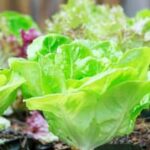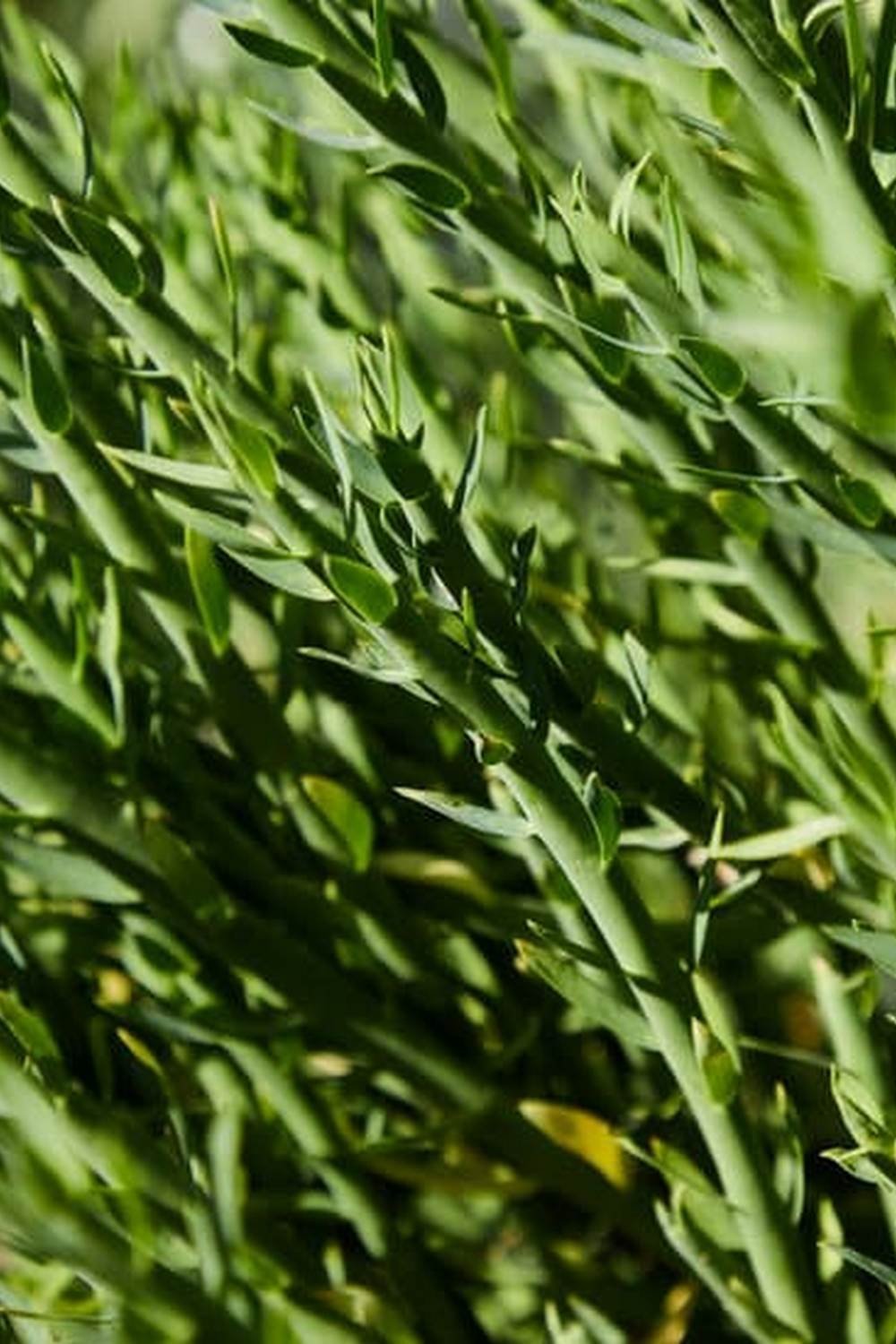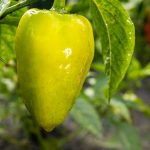Are you interested in starting a home vegetable garden in Kentucky? Home vegetable gardening in Kentucky offers a unique set of challenges and rewards due to the state’s climate and growing conditions.
This article will provide valuable information on the best vegetables to grow, tips for preparing the soil, choosing the right location for your garden, dealing with common pests and diseases, maximizing your garden with vertical gardening, and harvesting and preserving your bounty. Whether you are a beginner or experienced gardener, this guide will help you successfully cultivate your own home vegetable garden in Kentucky.
Kentucky’s climate offers a variety of growing conditions that can be ideal for certain vegetables. The state’s diverse landscape and weather patterns make it possible to grow a wide range of crops, from leafy greens to root vegetables. Understanding which vegetables thrive in Kentucky’s climate is essential for a successful home vegetable garden.
In addition to knowing which vegetables to grow, preparing the soil is crucial for healthy plant growth. The article will provide several tips on how to properly prepare the soil for a successful vegetable garden in Kentucky. From testing the soil’s pH levels to adding organic matter, these techniques will ensure that your garden has the best possible foundation for growth.
Best Vegetables to Grow in Kentucky’s Climate
When it comes to home vegetable gardening in Kentucky, selecting the right vegetables to grow is crucial for a successful harvest. Kentucky’s climate is characterized by hot, humid summers and cool winters, making it ideal for certain types of vegetables. Some of the best vegetables to grow in Kentucky’s climate include tomatoes, peppers, cucumbers, and squash. These warm-season vegetables thrive in the heat and sunlight that Kentucky’s summer months bring.
In addition to warm-season vegetables, cool-season crops also do well in Kentucky’s climate. These include leafy greens like lettuce, spinach, and kale, as well as root vegetables like carrots and radishes. The cooler temperatures during spring and fall provide optimal growing conditions for these crops. By incorporating a mix of warm-season and cool-season vegetables into your garden plan, you can ensure a steady supply of fresh produce throughout the growing season.
It’s important to select vegetable varieties that are well-suited to Kentucky’s climate and growing conditions. Look for cultivars that are known for their disease resistance and ability to withstand the heat and humidity of the region. Additionally, consider factors such as days to maturity and space requirements when choosing which vegetables to grow in your home garden.
| Vegetable | Ideal Growing Season |
|---|---|
| Tomatoes | Warm-season |
| Peppers | Warm-season |
| Cucumbers | Warm-season |
| Squash | Warm-season |
By carefully selecting the best vegetables for Kentucky’s climate and growing conditions, home vegetable gardeners can maximize their chances of a bountiful harvest at the end of the growing season.
Tips for Preparing the Soil for a Successful Vegetable Garden
When it comes to home vegetable gardening in Kentucky, preparing the soil is a crucial step for ensuring a successful harvest. The quality of your soil directly impacts the health and productivity of your vegetable garden. Here are some tips to help you prepare your soil for optimal growing conditions.
Conduct a Soil Test
Before you start planting, it’s important to conduct a soil test to determine the pH level and nutrient content of your soil. This will help you identify any deficiencies or imbalances that need to be addressed before planting. You can obtain a soil testing kit from your local cooperative extension office or purchase one from a gardening center. Once you have the results, you can make informed decisions about what amendments are needed to improve the soil quality.
Add Organic Matter
Incorporating organic matter, such as compost or well-rotted manure, into the soil can greatly improve its structure and fertility. Organic matter helps with water retention, drainage, and provides essential nutrients for plant growth. Work in a generous amount of compost or manure into the top 6-12 inches of soil to enrich it before planting your vegetables.
Avoid Compaction
Soil compaction can impede root growth and limit air and water movement within the soil. To prevent compaction, avoid walking on the planting beds whenever possible. Consider implementing raised beds to provide better drainage and prevent soil compaction, especially if your garden site has heavy clay soils. Creating pathways between your raised beds can also help minimize foot traffic on garden soil.
By following these tips for preparing the soil, you can create an ideal environment for growing healthy and productive vegetables in your home vegetable garden in Kentucky. Taking the time to address soil quality before planting will set the stage for a bountiful harvest throughout the growing season.
Choosing the Right Location for Your Home Vegetable Garden in Kentucky
When it comes to home vegetable gardening in Kentucky, choosing the right location for your garden is crucial for the success of your crops. The ideal location should receive at least 6-8 hours of direct sunlight, have good air circulation, and be close to a water source. Additionally, it is important to avoid areas with poor drainage or low-lying spots that may be prone to flooding.
One of the key considerations when selecting a location for your home vegetable garden in Kentucky is proximity to your home. Having your garden close to your house makes it easier to tend to and monitor for any issues that may arise such as pests or diseases. It also encourages frequent visits and attention, helping ensure the health and vitality of your plants throughout the growing season.
In addition to these factors, it’s essential to consider the space available in your yard when choosing a location for your home vegetable garden in Kentucky. If you have limited space, you may want to explore vertical gardening options or consider growing vegetables in containers. This can allow you to make the most of the space you have while still enjoying a bountiful harvest.
| Location Factors | Considerations |
|---|---|
| Sunlight | 6-8 hours of direct sunlight |
| Proximity | Close to home for easy monitoring |
| Space | Limited space may require vertical gardening or containers |
Dealing With Common Pests and Diseases in Kentucky’s Vegetable Gardens
Identifying Common Pests
One of the biggest challenges facing home vegetable gardening in Kentucky is dealing with common pests that can wreak havoc on your garden. Some of the most prevalent pests in Kentucky’s vegetable gardens include aphids, tomato hornworms, cabbage worms, and squash bugs. It’s important to regularly inspect your plants for any signs of pest infestation so that you can take action before the problem gets out of hand.
Organic Pest Control Methods
When it comes to managing pests in your home vegetable garden in Kentucky, many gardeners prefer to use organic pest control methods. For example, introducing beneficial insects such as ladybugs or praying mantises can help keep pest populations in check. Additionally, using neem oil or insecticidal soap can be effective at controlling certain pests without resorting to harsh chemical pesticides that can harm beneficial insects and pollinators.
Preventing and Managing Diseases
In addition to pests, Kentucky home vegetable gardeners also need to be vigilant about preventing and managing diseases that can affect their plants. Common diseases in Kentucky’s climate include powdery mildew, blight, and rot.
To minimize the risk of disease, it’s important to practice good garden hygiene by keeping the area clean and free of debris. Additionally, choosing disease-resistant varieties of vegetables and providing adequate spacing between plants can help prevent the spread of diseases in your vegetable garden.
By taking proactive measures to identify and manage pests and diseases in your home vegetable garden in Kentucky, you’ll be better equipped to enjoy a bountiful harvest throughout the growing season.
Maximizing Your Home Vegetable Garden in Kentucky With Vertical Gardening
Vertical gardening is a fantastic way to maximize the space in your home vegetable garden in Kentucky. With limited space, especially for urban or suburban gardeners, vertical gardening allows you to grow more vegetables in a smaller area. Here are some tips for incorporating vertical gardening into your home vegetable garden:
- Choose vining or climbing vegetables: Plants such as cucumbers, tomatoes, beans, and peas are perfect for vertical gardening as they tend to grow upwards and can be easily trained onto trellises or supports.
- Utilize trellises and supports: Invest in sturdy trellises, stakes, and supports to give your plants the structure they need to grow vertically. This will also help prevent overcrowding and improve air circulation, leading to healthier plants.
- Consider container gardening: Vertical gardens can also be created using containers that are stacked or hung on walls. This method is perfect for small spaces and provides an opportunity to grow a variety of vegetables without taking up much ground space.
In addition to maximizing space, vertical gardening can also make harvesting easier and more efficient. It reduces the amount of bending and stooping usually required when tending traditional gardens. Plus, by growing your vegetables vertically, you can minimize the risk of soil-borne diseases and pests.
So if you’re looking to make the most out of your home vegetable gardening in Kentucky, consider incorporating vertical gardening into your garden plan. Not only will it allow you to grow more produce in a limited space, but it can also make tending to your garden more accessible and enjoyable.
Harvesting and Preserving Your Vegetable Garden’s Bounty in Kentucky
Once all your hard work of planting, watering, and nurturing your home vegetable garden in Kentucky has paid off, it’s time to reap the rewards. Harvesting your vegetables at the right time is crucial to enjoying them at their peak flavor and nutrition. Here are some tips for harvesting and preserving your vegetable garden’s bounty in Kentucky:
- Harvest in the morning: Many vegetables are best harvested early in the day when they are still cool from the night. This helps to preserve their flavor and nutrients.
- Use sharp tools: When harvesting, use clean, sharp tools such as pruners or scissors to avoid damaging the plants. This also helps to prevent the spread of diseases.
- Preserving methods: To make the most of your harvest, consider preserving some of your produce for later use. Options include canning, freezing, pickling, or drying vegetables for long-term storage.
Preserving your home-grown vegetables allows you to enjoy them throughout the year and reduce waste. For those new to this process or looking for more guidance on preservation techniques specific to Kentucky’s climate and produce varieties, there are numerous resources available.
Whether through online forums, community workshops, or local gardening clubs, connecting with other home vegetable gardeners in Kentucky can provide valuable insights and advice on efficient preservation methods that best suit the state’s unique growing conditions. Additionally, organizations such as the University of Kentucky Cooperative Extension Service offer workshops and educational events focused on food preservation for home gardeners.
As you navigate through preserving your bounty from your home vegetable gardening in Kentucky journey, remember that each vegetable may require different handling methods. By staying informed about best practices for various crops and seeking out support from experienced gardeners in your area, you can savor the flavors of summer long after harvest season comes to an end.
Community Resources and Organizations for Home Vegetable Gardeners in Kentucky
In conclusion, home vegetable gardening in Kentucky offers a wealth of benefits and opportunities for residents to enjoy fresh, nutritious produce right from their own backyard. By selecting the best vegetables for the region’s climate and properly preparing the soil, gardeners can set themselves up for success. Additionally, choosing the right location, implementing strategies to combat pests and diseases, and considering vertical gardening techniques can all contribute to maximizing the potential of a home vegetable garden in Kentucky.
As the gardening season progresses, gardeners in Kentucky can look forward to a bountiful harvest and take steps to preserve their fruits of their labor through various methods such as canning or freezing. Furthermore, there are numerous community resources and organizations available to support home vegetable gardeners in Kentucky.
These resources can provide valuable information, networking opportunities with other gardeners, and access to workshops or events that can help individuals further develop their skills and knowledge in home vegetable gardening in Kentucky.
Ultimately, with the right tools, knowledge, and community support, it is clear that home vegetable gardening in Kentucky holds great promise for those looking to cultivate their own fresh produce. Whether it’s for personal enjoyment or contributing to a more sustainable lifestyle, the practice of home vegetable gardening in Kentucky has much to offer for both novice and experienced gardeners alike.
Frequently Asked Questions
What Vegetables Can I Grow in Kentucky?
Kentucky’s climate and soil make it suitable for growing a variety of vegetables. Some popular options include tomatoes, lettuce, peppers, cucumbers, and squash. Root vegetables like carrots and radishes also thrive in Kentucky’s soil.
When Should I Start My Garden in KY?
In Kentucky, the best time to start your garden is typically in early spring after the last frost has passed. This usually falls around late March or early April. Starting your garden at this time gives your plants the best chance to thrive during the growing season.
What Are the Easiest Vegetables to Grow in Your Home Garden?
If you’re new to gardening, there are several easy-to-grow vegetables that are perfect for beginners. These include tomatoes, lettuce, green beans, zucchini, and radishes. These vegetables are relatively low-maintenance and can be grown in various climates with minimal trouble.

If you’re looking to get into vegetable gardening, or are just looking for some tips on how to make your current garden better, then you’ve come to the right place! My name is Ethel and I have been gardening for years. In this blog, I’m going to share with you some of my best tips on how to create a successful vegetable garden.





